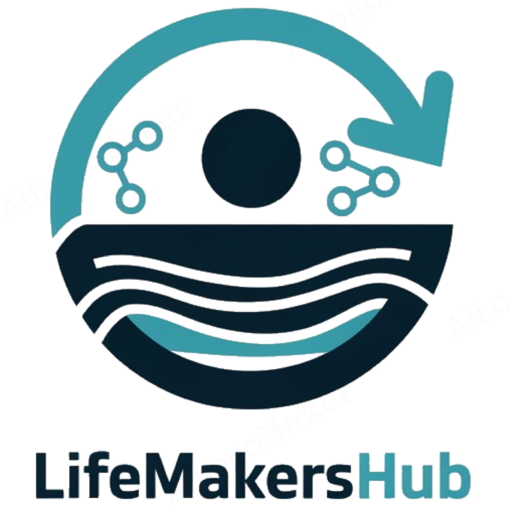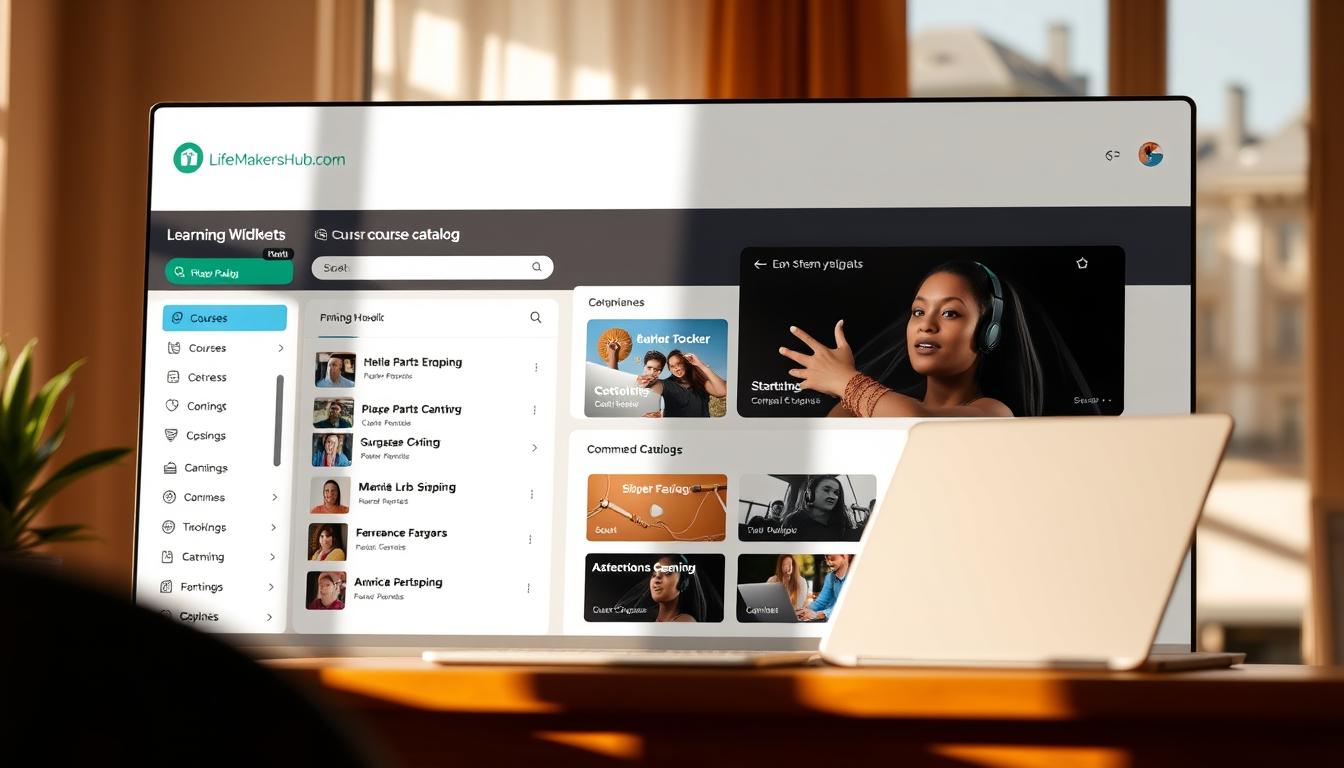Top E-Learning Platforms to Elevate Your Education
Online education has transformed how we learn, making knowledge accessible to everyone. With the rise of intuitive learning management systems, individuals and organizations can now access instructor-led courses, certifications, and professional development programs with ease. This evolution has democratized education, allowing learners to grow their skills from anywhere in the world1.
In this article, we’ll explore some of the top tools available today. From well-known names like Udemy and Coursera to specialized solutions, these platforms offer unique features to enhance your learning experience. Whether you’re looking to upskill, earn certifications, or manage team training, there’s a management system tailored to your needs2.
We’ll also provide comparisons and guidance to help you choose the right solution. By the end, you’ll have a clear understanding of how these tools can elevate your education and streamline your learning management process.
Key Takeaways
- Online education is more accessible than ever, thanks to advanced tools.
- Instructor-led courses and certifications are now available globally.
- Top platforms like Udemy and Coursera offer diverse learning opportunities.
- Learning management systems simplify training and professional development.
- Choosing the right platform depends on your specific needs and goals.
Introduction to the Digital Learning Revolution
The digital age has reshaped education, breaking barriers and making learning accessible like never before. Today, technology enables on-demand and flexible education, reaching billions worldwide1. This revolution is transforming how we acquire knowledge, offering personalized and inclusive solutions for everyone.
Both learners and instructors benefit from these innovative tools. For learners, it means access to a wealth of resources tailored to their needs. For instructors, it opens doors to new teaching methods and broader audiences. This shift is democratizing education, making it more adaptable to modern lifestyles2.
Traditional education models are evolving, thanks to digital advancements. The focus is now on creating engaging and interactive learning experiences. This approach not only enhances retention but also fosters a deeper connection with the material. The future of education is here, and it’s more dynamic than ever.
What Are Online Learning Platforms?
Modern technology has created new ways to teach and learn effectively. Online learning platforms are digital tools designed to host and deliver educational content. They provide structured environments where learners can access courses, interact with instructors, and track their progress1.
These platforms integrate multimedia elements like videos, quizzes, and interactive modules to enhance engagement. Many also offer certification functions, allowing learners to showcase their achievements. This makes them ideal for both personal growth and professional development2.
Online learning platforms play a dual role. For learners, they offer flexibility and access to a wide range of training resources. For creators, they provide tools to design, market, and sell their courses. This dynamic ecosystem benefits everyone involved3.
There are two main types of these platforms: course marketplaces and traditional LMS (Learning Management Systems). Course marketplaces, like Udemy and Coursera, focus on hosting and selling courses to a broad audience. Traditional LMS, such as Moodle or Docebo, are often used by organizations to manage internal training programs1.
| Feature | Course Marketplaces | Traditional LMS |
|---|---|---|
| Primary Users | Individuals & Instructors | Organizations & Teams |
| Focus | Course Sales & Accessibility | Training Management & Tracking |
| Examples | Udemy, Coursera | Moodle, Docebo |
Whether you’re a learner seeking new skills or an educator looking to share knowledge, online learning platforms offer the tools you need. They bridge the gap between traditional education and modern technology, making learning more accessible and effective2.
Overview of e-learning platforms and Their Role in Modern Education
The rise of digital tools has redefined how education is delivered and consumed globally. These solutions have become essential for both personal growth and professional development, offering flexible and interactive learning experiences3.
Today, these tools manage course content efficiently, using multimedia elements like videos, quizzes, and simulations. Platforms like LearnWorlds and Elucidat enable creators to design engaging courses while providing learners with structured paths to success1.
In corporate training, these systems streamline management by tracking progress and offering advanced reporting. For example, Skilljar has reduced support tickets by 25% through its training solutions1. This highlights their effectiveness in enhancing both education and business outcomes.
The growing trend of digital course creation is reshaping education. Platforms like Udemy and Coursera host millions of courses, making knowledge accessible to billions worldwide2. This democratization of learning ensures that anyone, anywhere, can upskill and achieve their goals.
| Platform | Key Feature | Best For |
|---|---|---|
| Elucidat | Pre-built templates, collaboration | Scalable course creation |
| Adobe Captivate | Advanced simulations | Technical training |
| LearnWorlds | Interactive content | Engaging learner experiences |
These tools are not just about delivering content; they’re about creating meaningful learning journeys. Whether for individual learners or large organizations, they play a vital role in modern education and training3.
Key Features to Consider in an E-Learning Platform
Customization and integration are key factors in choosing a modern learning solution. The right features can enhance both teaching and learning experiences, making it essential to evaluate what a platform offers. Let’s explore the critical aspects to look for when selecting a system that meets your needs.
Customization and User-Friendly Design
A customizable design ensures the platform aligns with your brand and goals. Look for tools that offer pre-built templates and multi-device compatibility. These features save time and ensure consistency across courses3.
User-friendly interfaces are equally important. They improve the learning experience by making navigation intuitive. Platforms like Elucidat and LearnWorlds excel in this area, offering seamless interactions for both creators and learners1.
Integration and Content Management
Robust integrations with third-party tools are crucial for efficiency. Platforms that support APIs can connect with CRM, payment gateways, and HR software, streamlining workflows1.
Content management features like bulk uploads and SCORM compliance are also vital. They ensure smooth course creation and delivery. For example, LearnUpon simplifies user management, while TalentLMS offers customizable certifications1.
| Feature | Benefit | Example Platforms |
|---|---|---|
| Customizable Templates | Saves time, ensures brand consistency | Elucidat, LearnWorlds |
| User-Friendly Interface | Enhances navigation and engagement | Thinkific, Teachable |
| API Integrations | Streamlines workflows with third-party tools | Skilljar, Docebo |
| SCORM Compliance | Ensures smooth content delivery | Moodle, Litmos |
Choosing the right system involves balancing customization, usability, and integration. These features ensure a seamless experience for both creators and learners, making your educational efforts more effective3.
Comparing Learning Management Systems with Online Learning Platforms
When it comes to digital education, understanding the differences between Learning Management Systems and online course marketplaces is crucial. Both serve distinct purposes and cater to different audiences, making it essential to know which one aligns with your goals.
LMS vs. Course Marketplaces
Learning Management Systems (LMS) are designed for structured, often internal use. They excel in managing training programs, tracking progress, and offering certifications. For example, Moodle’s plugin system allows extensive customization, making it ideal for organizations2.
On the other hand, online course marketplaces like Udemy and Coursera focus on accessibility and variety. Udemy boasts over 210,000 courses, catering to a global audience of learners2. These platforms are perfect for individuals seeking diverse topics and self-paced learning.
Differences in User Experience and Flexibility
LMS platforms, such as Docebo, prioritize structured learning paths and advanced reporting. They’re ideal for corporate training, where tracking employee progress is essential1.
Course marketplaces, however, offer greater flexibility. Learners can choose from a wide range of topics and instructors, often at lower costs. Coursera, for instance, provides certifications from top universities, making it a popular choice for professional development2.
- LMS Features: Structured training, certifications, and advanced tracking.
- Course Marketplace Features: Diverse content, affordability, and global accessibility.
Whether you’re an organization or an individual learner, understanding these differences helps you choose the right feature-rich solution for your needs. Both systems have their strengths, and the best choice depends on your specific goals3.
For Learners: Enhancing Your Learning Experience

Choosing the right course can make or break your learning journey. The quality of the content and the credibility of certifications are crucial factors in ensuring your success. Let’s explore how you can maximize your experience by selecting the best courses and leveraging the right tools.
Course Quality and Certification
High-quality courses are designed to provide actionable knowledge and practical skills. Look for courses taught by industry experts or accredited institutions. For example, Coursera partners with top universities and businesses to offer certifications that are recognized globally2.
Credible certifications not only validate your skills but also enhance your professional profile. Platforms like Udemy and Coursera provide certifications that can be showcased on LinkedIn or resumes, giving you a competitive edge2.
Support Features and User Experience
Well-designed support features can significantly improve your learning journey. Look for platforms that offer responsive customer service, easy-to-navigate interfaces, and interactive elements like quizzes and forums. These features make the learning process more engaging and effective1.
For instance, Skilljar’s multilingual support ensures learners from different regions can access courses in their preferred language1. This inclusivity enhances the overall experience and makes learning more accessible.
Tracking Progress and Feedback
Modern learning software provides tools to track your progress and receive feedback. Platforms like TalentLMS offer advanced reporting features, allowing you to monitor your achievements and identify areas for improvement1.
Feedback mechanisms, such as peer reviews and instructor evaluations, help you refine your skills and stay on track. These tools ensure you’re not just completing courses but truly mastering the material.
Tips for Selecting Professional-Standard Courses
- Check Instructor Credentials: Ensure the instructor has relevant expertise and experience.
- Read Reviews: Look for feedback from previous learners to gauge course quality.
- Verify Certification: Confirm that the certification is recognized in your industry.
- Explore Course Content: Preview the syllabus to ensure it aligns with your goals.
- Evaluate Support Options: Choose platforms with robust support features.
| Feature | Benefit | Example Platforms |
|---|---|---|
| Certifications | Enhance professional credibility | Coursera, Udemy |
| Support Features | Improve user experience | Skilljar, TalentLMS |
| Tracking Tools | Monitor progress and feedback | LearnUpon, Moodle |
By focusing on course quality, certifications, and support features, you can create a rewarding learning experience. The right software and tools will empower you to achieve your educational and professional goals1.
For Educators: Creating & Selling Online Courses
Educators today have unprecedented opportunities to share knowledge globally. With the right tools and strategies, you can build a thriving business around your expertise. Whether you’re an individual instructor or part of a team, creating and selling online courses can be both rewarding and impactful.
Marketing and Sales Tools
Effective marketing is key to reaching your target audience. Platforms like Skilljar offer advanced reporting tools that track metrics like course completion rates and session times1. These insights help you refine your strategies and maximize engagement.
Integrated sales tools also simplify the process. For example, LearnUpon allows batch uploads of users, making it easier to manage large groups1. This efficiency ensures your company can scale without compromising quality.
Technical Support and Platform Reliability
Reliable technical support is essential for smooth course delivery. Platforms like TalentLMS provide customizable certifications, including automated renewals, to enhance the learner experience1. This reliability builds trust with your audience.
Multi-language support, such as Skilljar’s offerings in French, German, and Portuguese, ensures your courses reach a global audience1. This inclusivity is crucial for expanding your business internationally.
Setting Up an Online Academy
Building a successful online academy requires planning and the right tools. Start by choosing a platform that aligns with your goals. Look for features like user-friendly interfaces, robust integrations, and scalability.
Engage your learners with interactive content and certifications. Platforms like LearnUpon and TalentLMS offer tools to create personalized learning paths and track progress1. These features ensure your team can deliver high-quality education consistently.
Top E-Learning Platform Reviews: LearnWorlds, Udemy, & Coursera Overview
Choosing the right learning solution can significantly impact your educational journey. In this section, we’ll compare three popular tools: LearnWorlds, Udemy, and Coursera. Each offers unique features tailored to different needs, whether you’re a learner or an educator.
LearnWorlds: A Comprehensive Tool for Course Creators
LearnWorlds stands out with its user-friendly interface and robust features. It offers built-in templates that simplify course creation, making it ideal for educators who want to focus on content rather than design2.
One of its key strengths is its video support, allowing creators to embed interactive elements like quizzes and annotations. This enhances learner engagement and retention3.
However, its pricing starts at $29/month, which may be a barrier for some users. Despite this, its scalability and customization options make it a top choice for serious course creators2.
Udemy: A Marketplace for Diverse Learning
Udemy is known for its vast library of over 210,000 courses, catering to a wide range of topics. Its affordability, with most courses priced between $10-$20, makes it accessible to a global audience2.
For instructors, Udemy takes a significant commission on sales, which can be a drawback. However, its reach and ease of use make it a popular choice for both learners and educators2.
Its video-based courses are easy to follow, but the lack of advanced customization options may limit its appeal for professional training programs3.
Coursera: Certifications from Top Institutions
Coursera partners with leading universities and companies to offer high-quality certifications. Its Coursera Plus subscription provides unlimited access to 90% of its courses, making it a cost-effective solution for continuous learning2.
Its structured learning paths and advanced reporting tools are ideal for professional development. However, its higher pricing and focus on academic content may not suit all learners2.
Coursera’s video content is top-notch, but its interface can be less intuitive compared to other platforms3.
| Feature | LearnWorlds | Udemy | Coursera |
|---|---|---|---|
| Pricing | Starts at $29/month | $10-$20 per course | Subscription-based |
| Course Creation | Built-in templates | Limited customization | Academic focus |
| Video Support | Interactive elements | Basic video hosting | High-quality content |
| Target Audience | Course creators | General learners | Professionals & students |
“The right learning solution can transform how you teach and learn, offering flexibility and engagement that traditional methods often lack.”
Each of these tools has its strengths and weaknesses. Whether you prioritize affordability, customization, or academic rigor, there’s a solution that fits your needs. By understanding their features and pricing, you can make an informed decision that aligns with your goals.
Standout Platforms for SMEs: Thinkific, edX, Teachable, and Kajabi
Small and medium-sized businesses (SMEs) are increasingly turning to digital solutions to enhance their training and sales strategies. Platforms like Thinkific, edX, Teachable, and Kajabi offer tailored features that support skill development and streamline course delivery. These tools are designed to meet the unique needs of SMEs, helping them grow their organization and expand their reach1.
Thinkific stands out with its user-friendly interface and customizable templates. It’s ideal for businesses looking to create professional courses without extensive technical knowledge. Thinkific’s freemium plan and 30-day free trial make it accessible for startups and small teams2.
edX, on the other hand, partners with prestigious institutions to offer high-quality courses. With over 4,000 options, it’s perfect for SMEs aiming to provide employees with advanced skills. Its certifications are recognized globally, adding value to both the organization and its learners2.
Teachable excels in sales-focused features, allowing businesses to monetize their courses effectively. Its integrated payment gateways and marketing tools simplify the sale process. Teachable’s pricing is competitive, making it a cost-effective choice for SMEs2.
Kajabi offers a comprehensive suite of tools for course creation, marketing, and sales. Its advanced analytics help businesses track performance and optimize strategies. While its pricing starts at $149/month, the investment is justified by its robust features2.
| Platform | Key Feature | Pricing |
|---|---|---|
| Thinkific | Customizable templates | Freemium to $199/month |
| edX | Prestigious institution partnerships | Free to $300/course |
| Teachable | Integrated sales tools | $29 to $299/month |
| Kajabi | Advanced analytics | $149 to $399/month |
Each platform offers unique advantages, whether it’s Thinkific’s ease of use, edX’s academic rigor, Teachable’s sales capabilities, or Kajabi’s all-in-one solution. By choosing the right tool, SMEs can enhance their training programs, boost employee skills, and drive sales growth1.
“The right platform can transform how SMEs deliver training and engage their audience, offering flexibility and scalability that traditional methods often lack.”
For SMEs, investing in the right digital solution is a strategic move. It not only improves internal training but also opens new revenue streams through course sales. With the right platform, SMEs can position themselves for long-term success1.
Corporate Training Solutions: Docebo and Litmos Insights
Corporate training has become a cornerstone of modern business strategies, driving efficiency and employee growth. Platforms like Docebo and Litmos are designed to meet the unique needs of large organizations, offering scalable solutions and advanced analytics. These tools not only streamline training but also enhance employee development and retention1.
Docebo stands out with its AI-powered features, enabling businesses to create personalized learning paths. Its advanced reporting tools track metrics like course completion rates and average session time, providing actionable insights for improving training programs2. This makes it an ideal option for organizations focused on data-driven decision-making.
Litmos, on the other hand, excels in simplicity and speed. Its user-friendly interface allows companies to deploy training programs quickly, reducing onboarding time significantly. With gamification elements like points and leaderboards, Litmos keeps learners engaged and motivated3.
Both platforms offer robust customization options, allowing businesses to tailor content to their specific needs. Docebo’s pricing starts at $25,000/year, making it a premium option for enterprises. Litmos, priced between $2 and $5 per user per month, is more accessible for mid-sized companies2.
| Feature | Docebo | Litmos |
|---|---|---|
| Pricing | $25,000/year | $2-$5/user/month |
| Key Strength | AI-powered analytics | Gamification & speed |
| Best For | Large enterprises | Mid-sized companies |
“The right training program can transform how organizations develop their workforce, offering flexibility and measurable outcomes.”
By leveraging these platforms, businesses can create effective training programs that align with their goals. Whether it’s Docebo’s advanced analytics or Litmos’s engaging features, these tools empower organizations to invest in their most valuable asset—their people1.
Open-Source and Customizable Options: Moodle and More
Open-source solutions are revolutionizing the way organizations approach education and training. These tools offer unparalleled flexibility, allowing users to tailor their systems to meet specific needs. One of the most popular open-source options is Moodle, known for its extensive customization and plugin management2.
Moodle’s open-source nature fosters interaction and collaboration. Users can modify the system to enhance engagement, whether through forums, quizzes, or multimedia content. This adaptability makes it a favorite in both academic and corporate environments1.
Another advantage of open-source tools is their support for user-driven development. Moodle, for example, allows educators to create custom plugins, ensuring the system evolves with their needs. This flexibility is crucial for organizations looking to stay ahead in a rapidly changing landscape2.
Open-source solutions also excel in cost-effectiveness. Unlike proprietary systems, they eliminate licensing fees, making them accessible to organizations of all sizes. Moodle’s compatibility with SCORM, AICC, and xAPI further enhances its appeal, ensuring seamless integration with existing tools2.
“Open-source tools like Moodle empower organizations to take control of their training programs, offering flexibility and scalability that proprietary systems often lack.”
For businesses, open-source platforms provide a scalable solution for training and development. Moodle’s bulk course creation feature, for instance, simplifies the process of training large groups, saving time and resources1.
In summary, open-source tools like Moodle offer a unique blend of customizability, cost-effectiveness, and scalability. Whether you’re an educator or a corporate trainer, these solutions provide the flexibility needed to create impactful learning experiences2.
Choosing the Right Platform: A Step-by-Step Guide

Selecting the right digital tool for education can feel overwhelming, but a structured approach simplifies the process. By focusing on your specific needs and goals, you can narrow down the options and make an informed decision. Let’s break it down into actionable steps.
Creating a Feature Checklist
Start by identifying the features that matter most to you. A detailed list ensures you don’t overlook essential tools. For example, if you’re an educator, look for customizable templates and interactive elements like quizzes and videos2.
For businesses, advanced reporting and tracking tools are crucial. Platforms like Docebo offer AI-powered analytics, providing insights into course completion rates and session times1. These features help you measure the result of your training programs effectively.
Here’s a quick checklist to get started:
- Customization: Does the platform allow branding and tailored content?
- Integration: Can it connect with tools like CRM or payment gateways?
- Support: Is technical assistance available when needed?
- Scalability: Can it grow with your needs?
Evaluating Budget and Scalability
Budget is a key factor in your decision. Some platforms, like Moodle, are open-source and free, while others, such as Docebo, start at $25,000/year2. Consider both upfront costs and long-term investments.
Scalability is equally important. If you’re a small business, platforms like Thinkific offer freemium plans and affordable subscriptions2. For larger organizations, solutions like Litmos provide pricing based on active users, ensuring flexibility as your team grows2.
Here’s a comparison of budget and scalability options:
| Platform | Pricing | Scalability |
|---|---|---|
| Moodle | Free (open-source) | Highly customizable |
| Thinkific | Freemium to $199/month | Ideal for SMEs |
| Docebo | $25,000/year | Best for enterprises |
| Litmos | $2-$5/user/month | Flexible for mid-sized companies |
“The right platform can transform how you deliver education, offering flexibility and measurable outcomes that align with your goals.”
By following this step-by-step guide, you can confidently choose a type of platform that meets your needs. Whether you prioritize features, budget, or scalability, the right decision will yield the best result for your educational or business objectives.
Interactive and Gamification Elements in E-Learning
Interactive and gamification elements are transforming the way we engage with educational content. These tools not only make learning more enjoyable but also significantly improve retention and motivation. By incorporating interactive features and game-like mechanics, educators can create a more immersive and effective learning experience3.
Engaging Learning Tools and Simulations
Interactive tools like quizzes, videos, and simulations are essential for modern education. They provide learners with hands-on experiences that enhance understanding and retention. For example, tools like Elucidat offer gamification and social polling, which boost engagement and make the learning process more dynamic3.
Simulations, particularly in technical training, allow learners to practice real-world scenarios in a safe environment. Adobe Captivate, for instance, is renowned for its advanced simulation capabilities, making it a top choice for technical and systems training3.
Building a Community of Active Learners
Creating a community of active learners fosters collaboration and continuous improvement. Platforms that support forums and group activities encourage learners to share knowledge and solve problems together. This collaborative approach not only enhances learning outcomes but also builds a sense of belonging among participants1.
Gamification elements like points, badges, and leaderboards further motivate learners by adding a competitive edge. SAP Litmos, for example, uses these features to keep learners engaged and motivated throughout their educational journey1.
| Platform | Interactive Feature | Benefit |
|---|---|---|
| Elucidat | Gamification & Social Polling | Boosts engagement |
| Adobe Captivate | Advanced Simulations | Real-world practice |
| SAP Litmos | Points & Leaderboards | Motivates learners |
“Interactive and gamification elements are not just trends; they are essential tools for creating engaging and effective learning experiences.”
By leveraging these interactive and gamification features, educators can transform the way learners engage with content. Whether through simulations, quizzes, or community-building activities, these tools make the learning process more dynamic and impactful3.
Integrations and Content Management in Modern Platforms
Seamless integration and efficient content management are the backbone of modern educational tools. These features ensure that courses are delivered smoothly, and learners have access to up-to-date resources. By leveraging robust integrations and advanced management systems, educators can focus on what matters most—creating impactful learning experiences1.
Robust integrations, such as APIs, allow platforms to connect with existing business systems like CRM and HR software. This alignment streamlines workflows and ensures data consistency across tools. For example, Skilljar’s well-documented API has reduced support tickets by 25%, showcasing the effectiveness of seamless integration1.
Modern content management features support rapid creation and updates. Tools like SAP Litmos offer built-in content authoring, eliminating the need for separate software. This efficiency enables educators to focus on designing engaging courses rather than technical setup1.
Scalable libraries of educational materials are essential for consistent course updates. Platforms like Coursera for Business provide access to a vast library of courses from top universities and companies. This ensures learners always have access to the latest knowledge and skills2.
Seamless integration also plays a crucial role in aligning with business systems. For instance, LearnUpon features custom learning environments (portals) that allow tailored training experiences for different teams within a single platform. This flexibility ensures that training programs meet specific organizational needs1.
“The right integrations and content management tools can transform how educators deliver training, offering flexibility and measurable outcomes.”
When choosing a platform, consider its integration and management capabilities. Look for features like SCORM compliance, bulk file uploads, and multi-language support. These elements ensure that your creation process is efficient and your content reaches a global audience1.
| Feature | Benefit | Example Platforms |
|---|---|---|
| API Integrations | Streamlines workflows with third-party tools | Skilljar, Docebo |
| Content Authoring | Simplifies course creation | SAP Litmos, LearnUpon |
| Scalable Libraries | Ensures access to updated resources | Coursera for Business, Moodle |
By prioritizing integration and content management, educators can create dynamic and effective learning environments. These tools not only enhance the creation process but also ensure that learners have access to the best resources available1.
The Future of E-Learning: Trends and Predictions for 2025
The future of education is being reshaped by emerging technologies and innovative approaches. As we look ahead to 2025, several key trends are set to transform how we learn, teach, and engage with educational material. From AI-driven personalization to mobile-first strategies, these advancements promise to make learning more accessible, engaging, and effective than ever before.
Emerging Technologies and Innovations
Artificial Intelligence (AI) is at the forefront of this transformation. AI-powered tools are enabling personalized learning experiences by analyzing user behavior and tailoring content to individual needs. For example, Docebo uses AI for automated content recommendations, ensuring learners receive the most relevant material1.
Mobile learning is another game-changer. With over 60 million students enrolled on Udemy, the demand for mobile-friendly courses is skyrocketing2. Enhanced design and responsive interfaces ensure that learners can access courses anytime, anywhere, making education more flexible and user-friendly.
Automation is also revolutionizing course creation. Tools like Elucidat can produce training content four times faster, thanks to features like auto-translate and collaborative authoring3. This efficiency allows educators to focus on creating high-quality, engaging material without being bogged down by technical challenges.
Impact on Business and Customer Education
For businesses, these innovations are transforming training programs and customer education. Companies utilizing advanced tools report increased engagement and improved brand loyalty1. Skilljar, for instance, has reduced support tickets by 25% through enhanced customer education1.
AI and automation are also streamlining onboarding processes. Platforms like TalentLMS offer customizable certifications, automating renewals and ensuring compliance1. This not only saves time but also enhances the overall learning experience for employees and customers alike.
Mobile-first strategies are particularly impactful for global audiences. Skilljar’s multi-language support accommodates learners across various countries, making education more inclusive and accessible1. This approach fosters deeper customer relationships and long-term loyalty.
“The integration of AI and mobile learning is not just a trend; it’s a necessity for businesses looking to stay competitive in the digital age.”
| Trend | Impact | Example |
|---|---|---|
| AI Personalization | Tailored learning experiences | Docebo |
| Mobile Learning | Flexible, on-the-go education | Udemy |
| Automation | Faster course creation | Elucidat |
As we move toward 2025, organizations must embrace these trends to stay ahead. By investing in user-friendly tools and innovative design, businesses can create impactful learning experiences that drive growth and success. The future of education is here, and it’s more dynamic than ever.
Conclusion
The journey through modern education tools reveals a world of possibilities for learners and educators alike. From Skilljar’s customizable learning paths to Coursera’s vast library of courses, each product offers unique features tailored to specific needs12. Whether you’re enhancing customer education or pursuing personal growth, the right tool can transform your experience.
Choosing the best fit requires understanding your goals and evaluating key features. Use the checklists and comparisons provided to make an informed decision. This ensures you invest in a product that aligns with your objectives, whether for corporate training or individual learning.
Take the next step today. Apply the insights and advice shared here to unlock the full potential of these tools. By doing so, you’ll not only gain knowledge but also empower yourself or your organization to thrive in a digital-first world.
Remember, continuous improvement is key. Embrace the evolving landscape of education tools to stay ahead. Your journey to success starts with the right choice—make it count.







